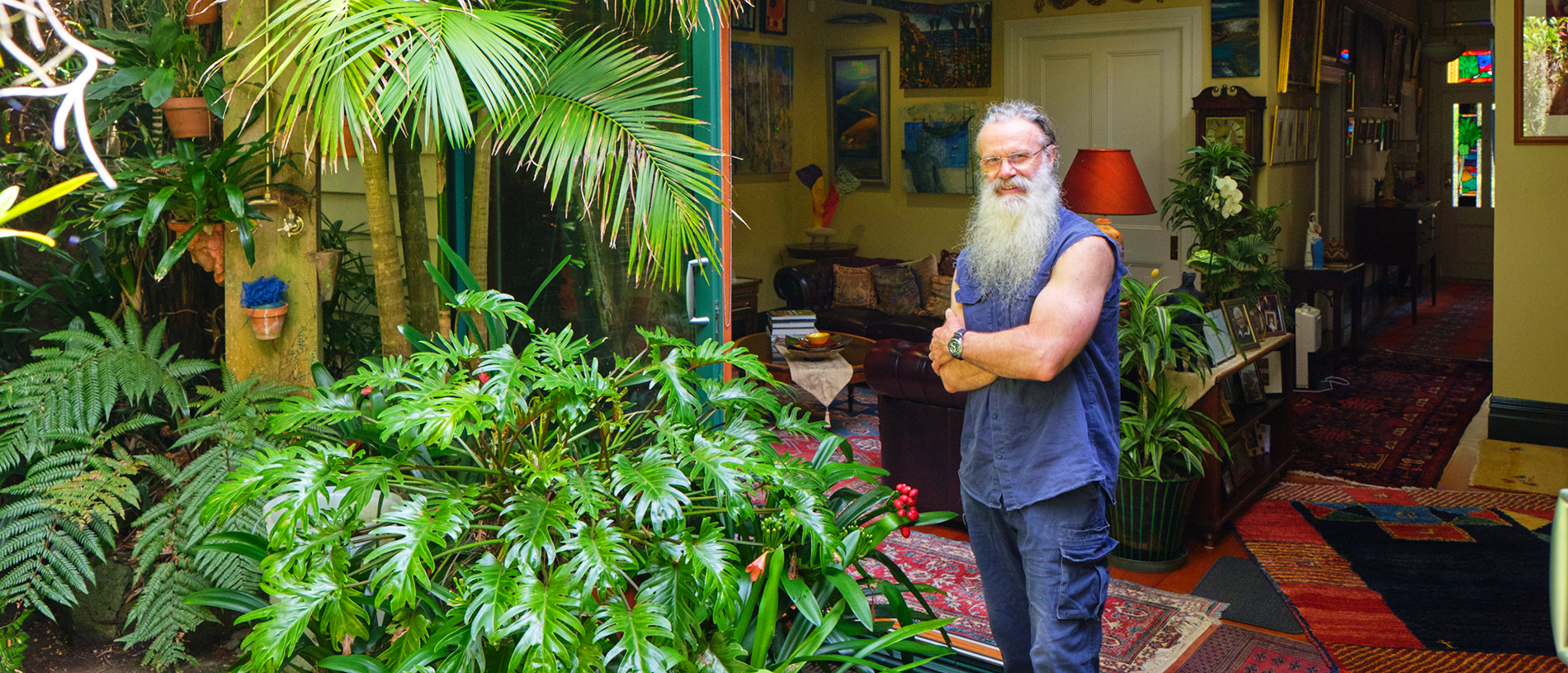
An urban garden oasis in Auckland
When it comes to inner city gardens, the only way is up according to Auckland’s Mark Van Kaathoven, gardener extraordinaire and climate change crusader.
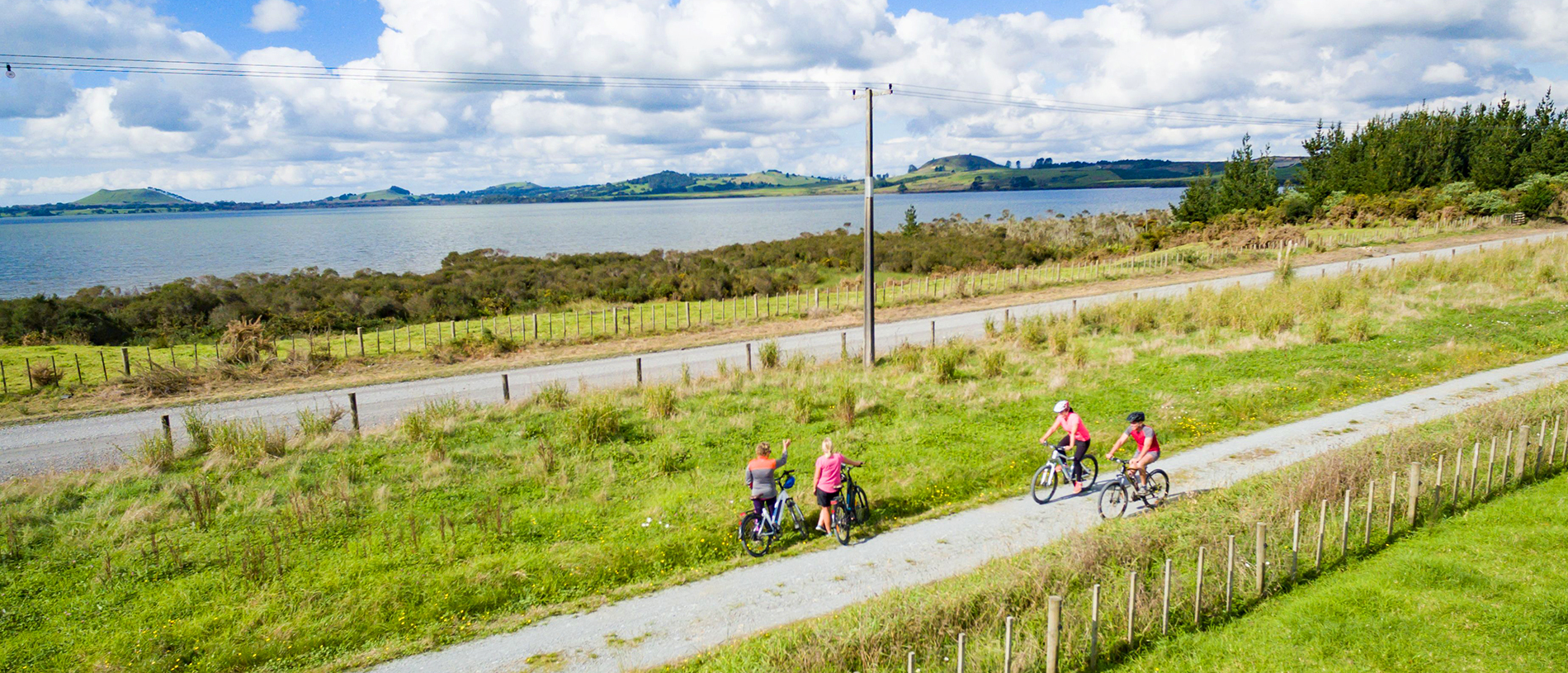
Magpies, peacocks and turkeys – not what I was expecting on a Northland cycling trail but this adventure was full of surprises.
To be honest, I wasn’t sure what to expect. I knew the area we were riding through – from east coast’s Bay of Islands, west to Hokianga – but it transpired I didn’t know it very well. Riding Pou Herenga Tai Twin Coast Cycle Trail revealed a whole lot of behind-the-scenes.
Once fitted with e-bikes, helmets, packed panniers and maps, we rode from Top Trail’s base in Kaikohe to a quick Sunday morning coffee fix before heading out of town. Straight off, we found ourselves on a smooth, varied and delightful path. Like many of New Zealand’s cycle trails, much of this one follows old railway lines.
Top Trail, the company that operates the self-guided tour we’d signed on for, had us travelling from Kaikohe on both days – one day east, the next day west – which initially seemed odd, but once we were doing it, it made complete sense. Kaikohe is sort of in the middle of the two coastlines, and it meant we’d be going downhill each day. The drive back to base was short and we stayed in different and interesting places each night.
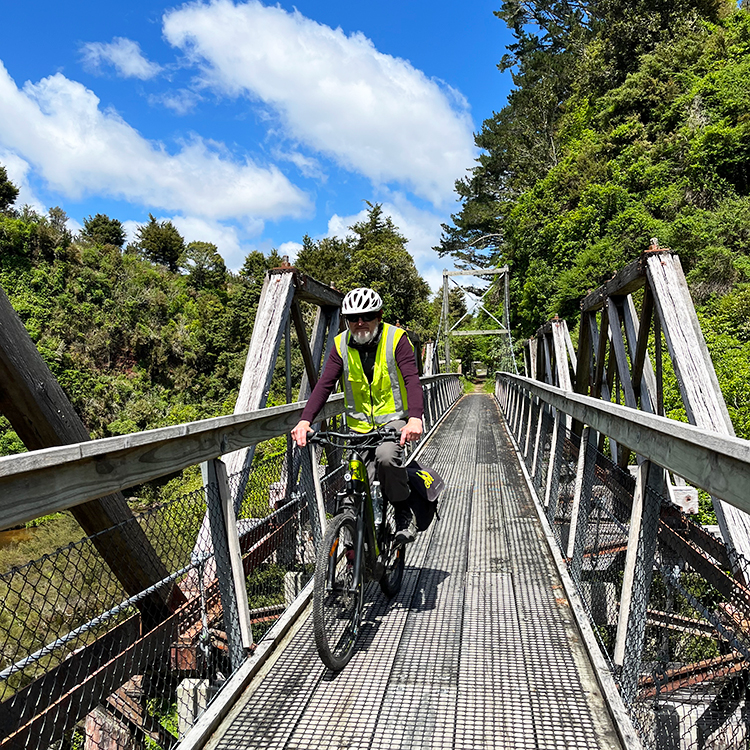
Paihia was the first; a sunny, busy seaside town in the Bay of Islands. From our lodge on the hill we walked down to the main strip to chose from many spots to eat. As the sun set and a light wind dropped, we enjoyed the convivial mood over wine and nibbles at the Tipsy Oyster.
It was an early start though, so an early night.
From Kaikohe the trail led through farmland, down corridors of trees, past paddocks rich in spring grass hedged with mature trees. Jasmine perfumed the air, flame trees sparked red and dripping wisteria added to the overall prettiness.
We heard peacocks calling and spied one trailing its bejewelled tail. More sinister were the magpies, but even when they swooped at us, it was only mildly menacing; we just pedalled away as quickly as we could.
We stopped regularly – to lie on the grass in the sun, to marvel at ancient bridge engineering, to stare into streams looking for eels and to photograph the lush Northland vista.
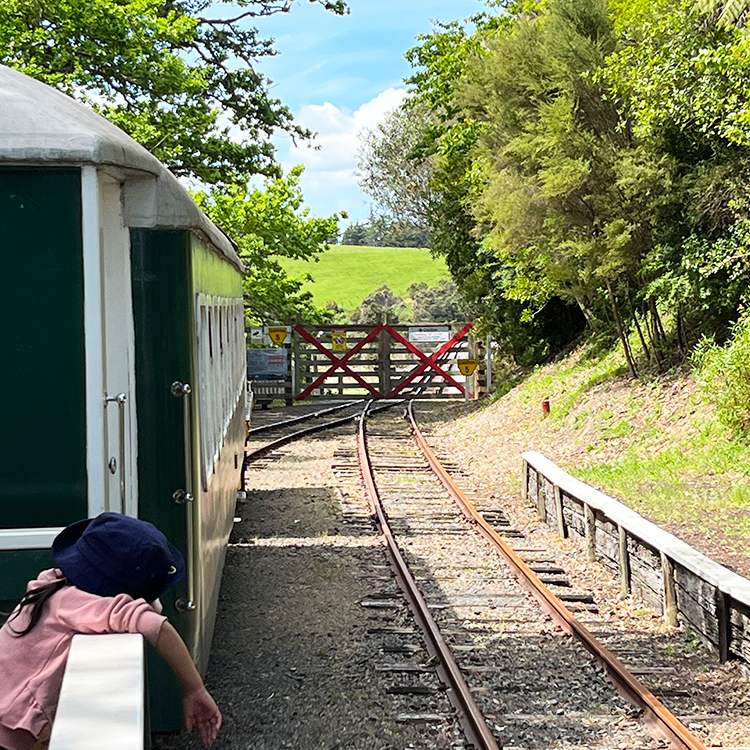
We made good time and rode into Kawakawa ahead of schedule. As planned, we boarded the wildly fun historic train to ride the few kilometres missing from the cycle track, across the longest curved wooden bridge in the southern hemisphere, to Te Akeake station and the linking cycle path to Ōpua. Kawakawa’s vintage railway is a truly impressive project, especially considering it runs on volunteer power; it’s a perfect accompaniment to the Pou Herenga Tai Twin Coast Cycle Trail, the other local endeavour putting life back into the rail corridor.
The last block of cycling took us around the estuary into Ōpua where our shuttle was waiting.
Having had a near-perfect day, we thought we would take it up another notch and stopped in at Ngāwhā Springs, between Kaikohe and Ōhaeawai where we were booked to stay the night. The pools have recently been renovated and they’re now, in a word, flash. A series of small mineral tubs dotted around a landscaped park invite soaks of varying temperatures.
Almost oily and somehow very dark, despite the shallowness, there was magical quality to the soak. The smell, the heat, the silkiness on the skin added up to relaxation verging on catatonic.
Waiting for us at Ōhinewai was another luxurious experience: Historic Paheke, our lodgings for the night. Our host showed us to a stunning room with balconies overlooking a garden in blossom, with huge trees including several with protected heritage status. The house itself, built in 1862, is historically rich and the owners respect it, with details kept authentic, art on the walls reflecting the stories of the area and of the family. We sat down, quite formally, to an exceptional home-cooked, three-course meal. It was very welcoming and special.
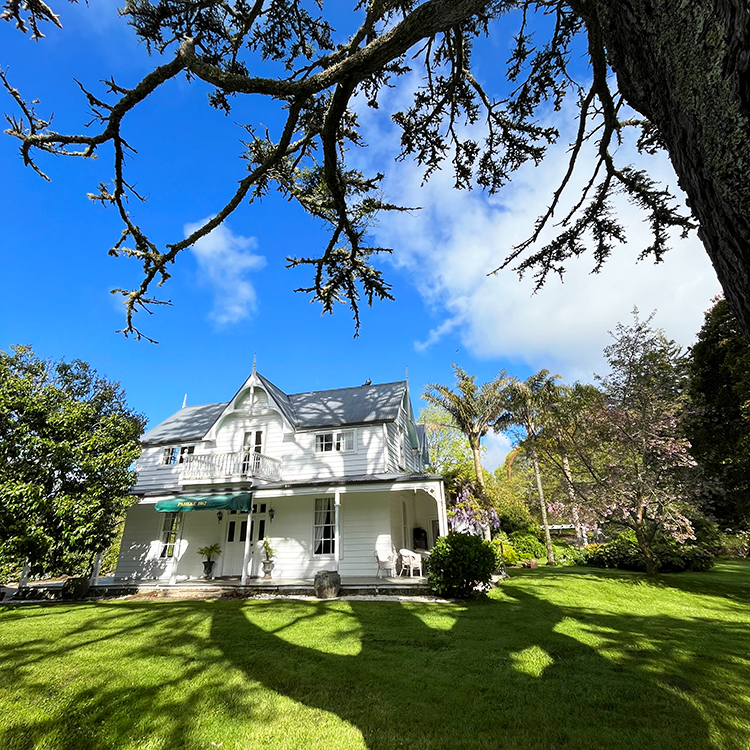
Leaving Kaikohe for the ride west started with a mild hill climb to views of the town and picturesque farmland. The trail took us along lovely rural lanes shaded with pūriri and tōtara, through a curved rail tunnel and down to a pathway with glimpses of Lake Ōmāpere. Soon after, we arrived in Ōkaihau where we stopped for coffee and chatted to locals and other travellers. Some were off a cruise ship moored in the Bay of Islands; they too were cycling, experiencing a slice of real New Zealand.
Past churches and memorials, along fence lines protecting orchards and lifestyle blocks, we came to a section of downward zig-zag into a valley with a small stony river rambling through it.
Cycling so quietly and effortlessly through this land felt special; we were effectively on someone’s farm, riding their farm tracks. Especially insightful was Snow’s Farm. In the summer, this picnic spot by the river offers food for sale and a few rooms to stay in. We were too early in the season but we were still able to poke around the informal museum loaded with ancient tractors, chainsaws, farming equipment, farrier tools, carpentry tools. It was fascinating.
This is where the turkeys came in: a family of the silly birds ran in front of us for several panicky minutes before exiting stage right, into the bush.
After a bit of a lumpy rural road we were suddenly at the edge of Hokianga Harbour on a boardwalk that carried us over wetlands thick with golden-red reeds, moving in the wind like fur among the mangroves. This welcoming carpet led to Hōreke, our base for the night.
Hōreke is loaded with history. This was the first stop, after Waitangi, for signatures to be added to the Treaty and was where the single largest signing took place. The Māngungu Mission house still houses the table used by rangitira for the occasion. The church down the hill from the house glows like a beacon on the harbour edge. Its story is a good one, too – having been shipped from Kohukohu, swapped for a bigger one needed at the more populated town over the harbour, in a complicated-sounding rivalry between Catholic and Protestant congregations. Apart from early missionaries, Hōreke was once busy with ship building and had a vibrant life but these days it is sleepy.
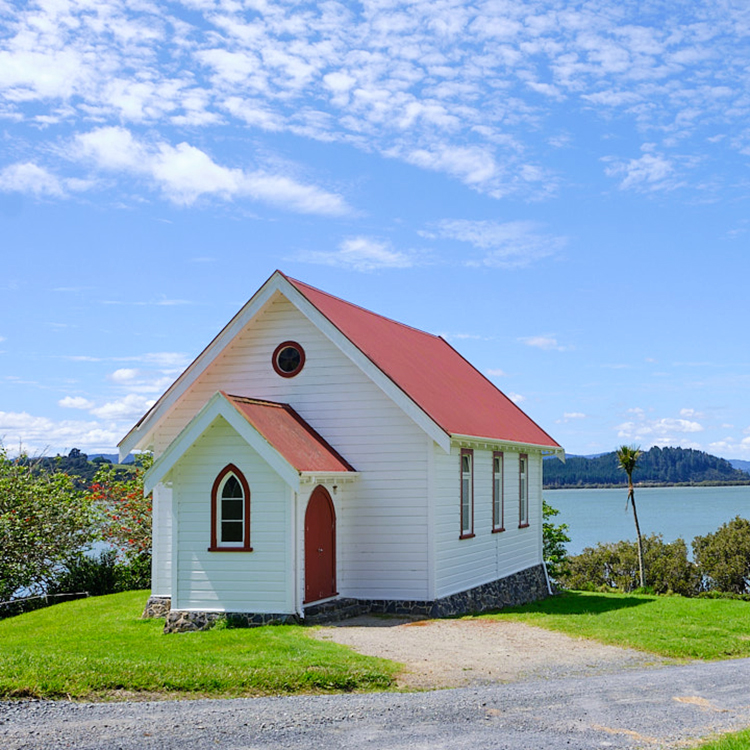
We rode up to our digs for the night, Riverhead Villa, an elegant old house moved here in the 1970s now operating as a B&B. We settled onto the veranda with its swing seat and cane furniture and wonderful views of the Hokianga. It felt like we were home.
That night, we met up with a crew doing Northland Experience’s Cook to Kupe guided tour and arranged to join them to Kohukohu the next day. We all left by shuttle first to see the Wairere boulders. Impossibly huge rocks are scattered around a river valley, apparently put there by volcanic explosion but more likely by some magic, somehow. They are too big! And weird! Striated by millions of years’ of dripping acidic water, these mossy monsters need to be seen to believed.
To cross the harbour to Kohukohu we boarded a sturdy wee boat, the Ranui, and chugged the 20-minute ride while captain Craig told stories of the area, bringing its rich industrial and social history to life.
We could almost imagine the thriving harbour, busy with sea traffic, that the Hokianga once was. Echoes of those days remain in the harbourside towns.
Romantic little Kohukohu, with heritage architecture and charm, was a joy to cycle around. We called into galleries, enjoyed the sun outside a café, poked about the back streets, then sped to the car ferry for the short trip to Rāwene.
We spent a happy couple of hours there, riding through Rāwene’s streets, admiring the lovely old gardens hiding lovely old homes. It’s another treasure, that town, with stories and history and heritage.
From east to west, right across, is a rich vein of interesting life old and new; cycling it was a brilliant way to get a taste of that, to see the place closer, and to get to know it a little better.
Story by Kathryn Webster for the Summer 2023 issue of AA Directions Magazine. Kathryn is the Editor of AA Directions magazine.